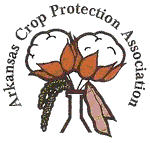Abigail Norsworthy won first place in the undergraduate student competition with a paper titled “Crop Response to Low Concentrations of Diflufenican in Soil”. Diflufenican is being developed by Bayer CropScience for Palmer amaranth control in soybean. Commercialization of the herbicide will provide soybean growers with a herbicide mode of action that is currently not labeled within the crop. The objective of this research was to understand the tolerance of cotton, corn, grain sorghum, and rice to soil-applied diflufenican because these crops are routinely rotated with soybean in Arkansas. Diflufenican was applied to 4,000 g of an air-dried silt loam soil at 0.0625, 0.0125, 0.25, 0.5, and 1.0 times the anticipated labeled rate of the herbicide. Each crop was seeded into trays inside the greenhouse and crop tolerance assessments were taken at 1 and 2 weeks after emergence. No damage to rice in the form of bleaching was observed at any rate. Injury in the form of bleaching was less than 15% at the highest rate for cotton, corn, and grain sorghum at 1 week after treatment. Injury was transient with less injury observed by the 2 weeks after emergence evaluation. Based on these results, there appears to be low risk for sustained injury to crops rotated with soybean treated with a full rate of diflufenican.

 Andrew Plummer and Taylor Ibbotson Win ACPA Research Conference Poster Cont...
Andrew Plummer and Taylor Ibbotson Win ACPA Research Conference Poster Cont...